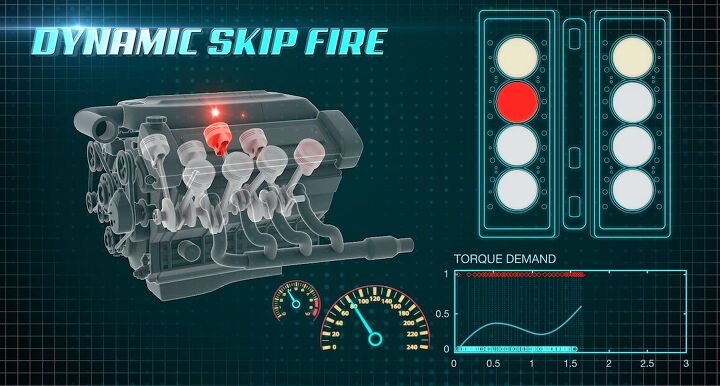GM Banking On Dynamic Cylinder Deactivation For Improved Fuel Economy
General Motors has played with cylinder deactivation technology since the days of Carter, sometimes successful, sometimes with more disastrous results.
With Tula Technology’s Dynamic Skip Fire, GM is banking on the former.
The technology — a result of the automaker’s 2012 equity investment in the startup via GM Ventures — uses “advanced digital signal processing with sophisticated powertrain controls to create a software-based approach to variable displacement engines.” This allows for a dynamic approach for cylinder management, with individual cylinders to be activated or deactivated on a case-by-case basis while maintaining proper torque at all speeds/loads and avoiding vibration issues.
GM believes employment of DSF could improve fuel economy among its various models by as much as 15 percent compared to other cylinder-deactivation methods, such as its Active Fuel Management system used by the likes of the Chevrolet Silverado and GMC Sierra, among others.
As for when DSF might appear, Tula CEO R. Scott Bailey couldn’t say much about the timeline, but that his investor views the technology as “production worthy,” per an interview with Autoblog. Other investors in Tula include Sequoia Capital, Sigma Partners and Khosla Ventures.
Seattle-based writer, blogger, and photographer for many a publication. Born in Louisville. Raised in Kansas. Where I lay my head is home.
More by Cameron Aubernon
Latest Car Reviews
Read moreLatest Product Reviews
Read moreRecent Comments
- Wjtinfwb My comment about "missing the mark" was directed at, of the mentioned cars, none created huge demand or excitement once they were introduced. All three had some cool aspects; Thunderbird was pretty good exterior, let down by the Lincoln LS dash and the fairly weak 3.9L V8 at launch. The Prowler was super cool and unique, only the little nerf bumpers spoiled the exterior and of course the V6 was a huge letdown. SSR had the beans, but in my opinion was spoiled by the tonneau cover over the bed. Remove the cover, finish the bed with some teak or walnut and I think it could have been more appealing. All three were targeting a very small market (expensive 2-seaters without a prestige badge) which probably contributed. The PT Cruiser succeeded in this space by being both more practical and cheap. Of the three, I'd still like to have a Thunderbird in my garage in a classic color like the silver/green metallic offered in the later years.
- D Screw Tesla. There are millions of affordable EVs already in use and widely available. Commonly seen in Peachtree City, GA, and The Villages, FL, they are cheap, convenient, and fun. We just need more municipalities to accept them. If they'll allow AVs on the road, why not golf cars?
- ChristianWimmer Best-looking current BMW in my opinion.
- Analoggrotto Looks like a cheap Hyundai.
- Honda1 It really does not matter. The way bidenomics is going nobody will be able to afford shyt.


































Comments
Join the conversation
Are they going to use that new gauge design in the photo for the ATS?
What is the advantage of this over forced induction, where the blower can create a higher 'virtual' displacement as needed. It would seem that more displacement and forced induction are two ways to do the same thing (bring in more air, adding more fuel to keep the ratios in line, and gaining more power as a result.) The V8-6-4 was a good concept that GM fumbled on implementation. The same goes for turbocharging and all-aluminum blocks (F-85 Rocket V8).